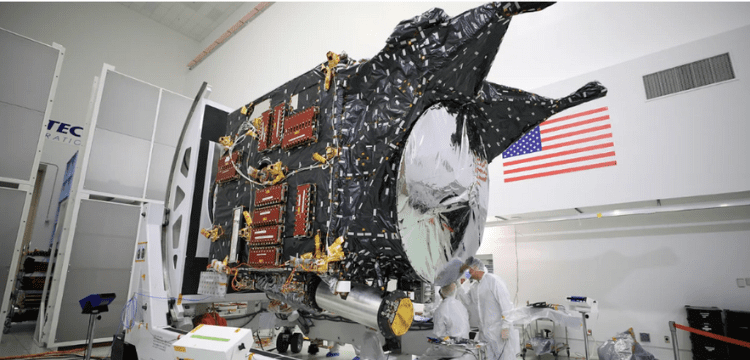[vc_row][vc_column][vc_column_text dp_text_size=”size-4″]The Psyche mission, as it was initially dubbed, was scheduled to launch in 2022. However, the launch window began on August 1 and ended on October 11, before the spacecraft’s flight software was ready.
Engineers noticed a compatibility issue in the software’s test bed simulators while testing at NASA’s Jet Propulsion Laboratory in Pasadena, California. The problem was fixed, however there was insufficient time for a full checkout and launch in 2022.
According to the release, an independent review board determined that the actions taken by NASA and the California Institute of Technology to get the delayed mission back on track, including work on the mission as well as institutional steps, were “outstanding.”
The review board, which met last summer after delays became apparent in June 2022, issued a report to NASA in November with suggestions. The investigation addressed solutions to mission-related difficulties as well as “JPL institutional issues” that caused the delay.
“We convened this board weeks after I took over as director, and addressing the issues it raised has been a major focus of my first year as JPL’s director.” “The results are encouraging,” JPL Director Laurie Leshin stated in a statement. “Our goals went beyond getting Psyche to the launch pad to improving JPL across the board as we work on missions that will help us better understand Earth, explore the solar system and universe, and search for signs of life.”
Getting Psyche on track
Engineers needed to be confident that the software would work properly once the spacecraft took off. The guidance and navigation software aids in controlling the orientation of the spacecraft as it travels through space and directing its antenna towards Earth for communications and data relay. This software also feeds trajectory data to the spacecraft’s propulsion system.
“The project is very nearly through all key software testing, which was the main challenge at the time of the delay, and that has gone well, and the team is on track within margin,” Leshin stated. “Our team is heading to Florida to begin final spacecraft testing in preparation for launch.” I’m happy to announce that everything is green and on schedule for our October launch.”

According to the study, the Covid-19 epidemic contributed to the delay, but the board also decided that staffing, management supervision, and communication were barriers.
Also Read: Europe’s ‘crazy’ tourism season has already begun. And it’s only going to get worse.
To get the Psyche mission ready for launch, JPL reorganised its staff, updated a hybrid work policy to allow the crew to spend more time together, and added experienced team members to the mix
“The independent review board is extremely impressed by the accomplishments of the entire JPL organisation and Caltech,” according to the report. “The JPL director and senior leadership’s participation in and leadership of the overall response process is deemed ‘world class.'” (JPL is managed by the California Institute of Technology on behalf of NASA.)
“I am pleased with the independent review board’s resoundingly positive assessment of JPL’s hard work in correcting the issues outlined in the board’s original report,” said Nicola Fox, associate administrator of NASA’s Science Mission Directorate. “We understand that our task is not done. We will continue to engage with JPL to ensure that these adopted modifications are prioritised in order to position Psyche and the other missions in JPL’s portfolio for success.”
The upcoming adventure of Psyche
The spacecraft will travel 280 million miles (450 million km) to reach the asteroid, also known as Psyche, in August 2029 and will orbit it for 26 months.

Some scientists believe the Psyche asteroid represents the exposed core of a planetesimal, or a planet in the forming that divided into layers.
Collisions with other celestial objects may have peeled away the outer layers over time, revealing the surviving metallic core. If Psyche is a core, examining it is akin to peeking inside the core of a planet like Earth.
To ground- and space-based telescopes, the potato-shaped asteroid looks as a blurry blur. According to NASA, the odd object might perhaps be a chunk of primordial material that never melted.[/vc_column_text][/vc_column][/vc_row]











